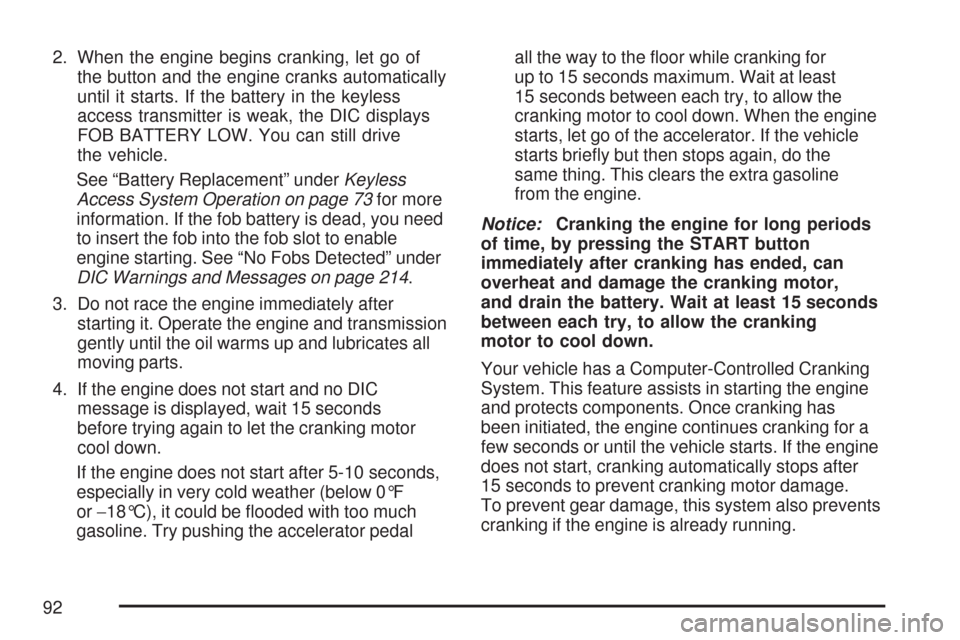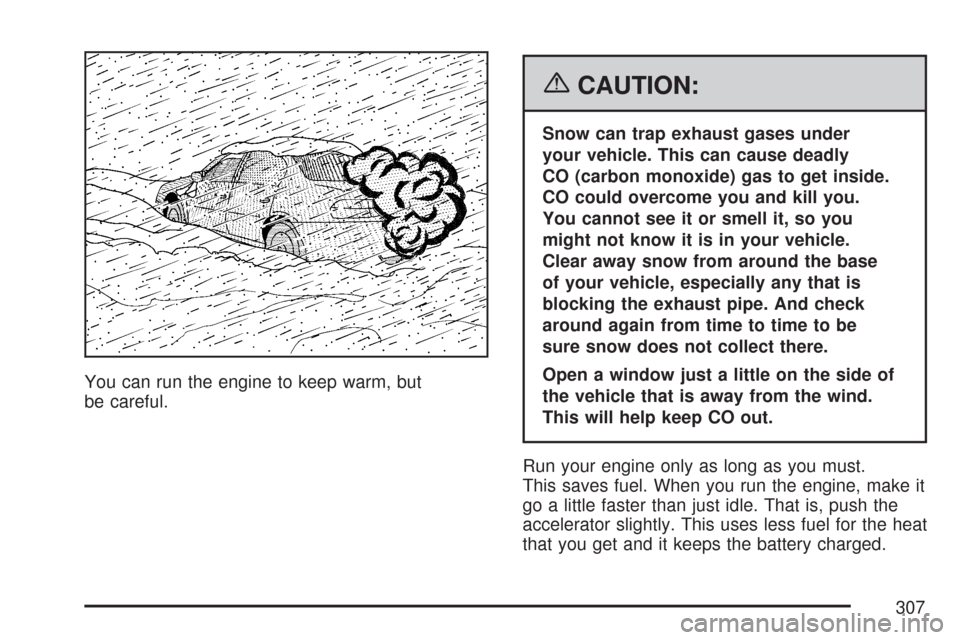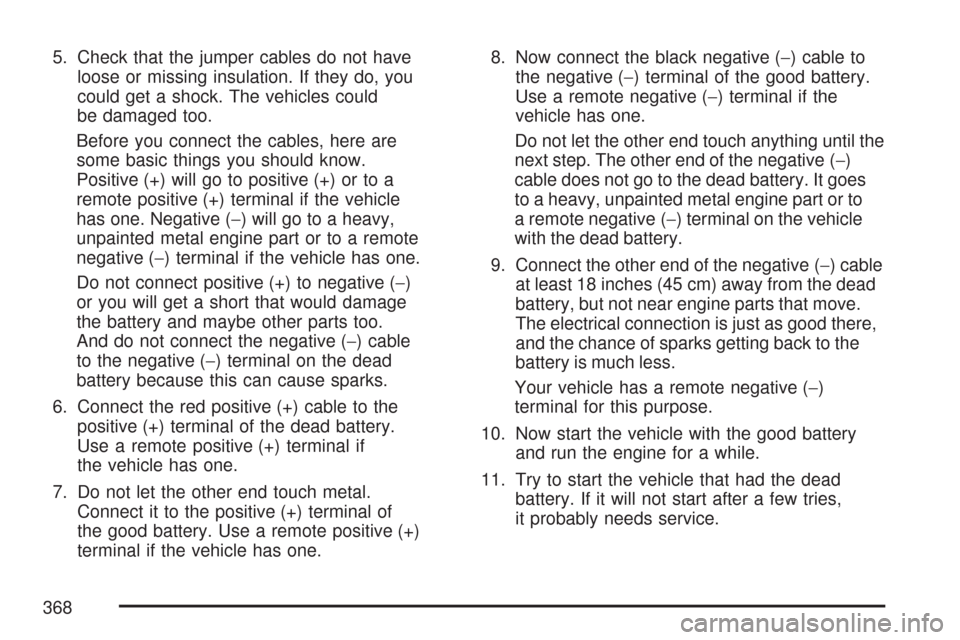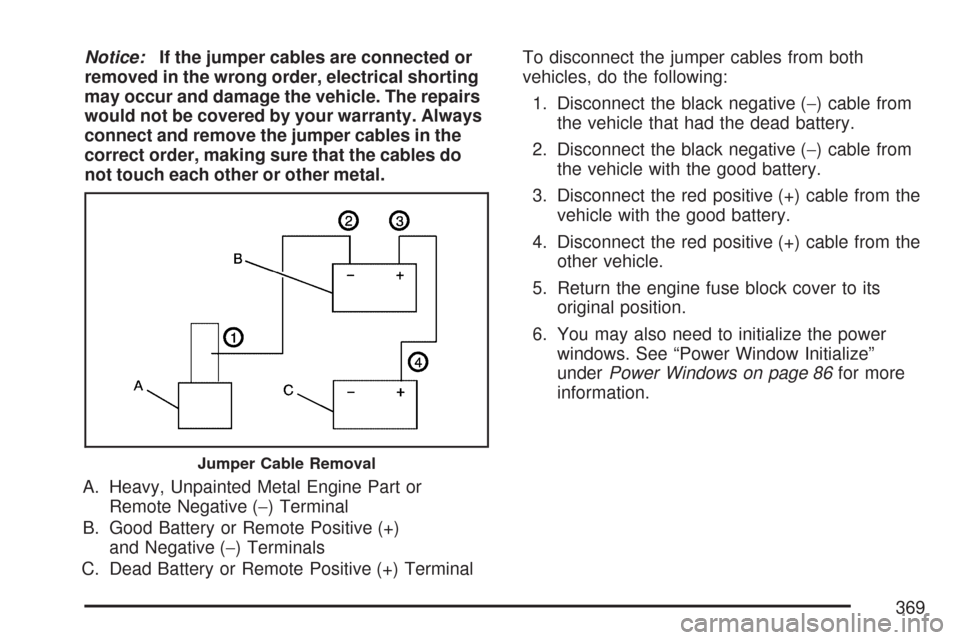dead battery CHEVROLET CORVETTE 2007 6.G Owners Manual
[x] Cancel search | Manufacturer: CHEVROLET, Model Year: 2007, Model line: CORVETTE, Model: CHEVROLET CORVETTE 2007 6.GPages: 488, PDF Size: 2.62 MB
Page 92 of 488

2. When the engine begins cranking, let go of
the button and the engine cranks automatically
until it starts. If the battery in the keyless
access transmitter is weak, the DIC displays
FOB BATTERY LOW. You can still drive
the vehicle.
See “Battery Replacement” underKeyless
Access System Operation on page 73for more
information. If the fob battery is dead, you need
to insert the fob into the fob slot to enable
engine starting. See “No Fobs Detected” under
DIC Warnings and Messages on page 214.
3. Do not race the engine immediately after
starting it. Operate the engine and transmission
gently until the oil warms up and lubricates all
moving parts.
4. If the engine does not start and no DIC
message is displayed, wait 15 seconds
before trying again to let the cranking motor
cool down.
If the engine does not start after 5-10 seconds,
especially in very cold weather (below 0°F
or−18°C), it could be �ooded with too much
gasoline. Try pushing the accelerator pedalall the way to the �oor while cranking for
up to 15 seconds maximum. Wait at least
15 seconds between each try, to allow the
cranking motor to cool down. When the engine
starts, let go of the accelerator. If the vehicle
starts brie�y but then stops again, do the
same thing. This clears the extra gasoline
from the engine.
Notice:Cranking the engine for long periods
of time, by pressing the START button
immediately after cranking has ended, can
overheat and damage the cranking motor,
and drain the battery. Wait at least 15 seconds
between each try, to allow the cranking
motor to cool down.
Your vehicle has a Computer-Controlled Cranking
System. This feature assists in starting the engine
and protects components. Once cranking has
been initiated, the engine continues cranking for a
few seconds or until the vehicle starts. If the engine
does not start, cranking automatically stops after
15 seconds to prevent cranking motor damage.
To prevent gear damage, this system also prevents
cranking if the engine is already running.
92
Page 307 of 488

You can run the engine to keep warm, but
be careful.
{CAUTION:
Snow can trap exhaust gases under
your vehicle. This can cause deadly
CO (carbon monoxide) gas to get inside.
CO could overcome you and kill you.
You cannot see it or smell it, so you
might not know it is in your vehicle.
Clear away snow from around the base
of your vehicle, especially any that is
blocking the exhaust pipe. And check
around again from time to time to be
sure snow does not collect there.
Open a window just a little on the side of
the vehicle that is away from the wind.
This will help keep CO out.
Run your engine only as long as you must.
This saves fuel. When you run the engine, make it
go a little faster than just idle. That is, push the
accelerator slightly. This uses less fuel for the heat
that you get and it keeps the battery charged.
307
Page 368 of 488

5. Check that the jumper cables do not have
loose or missing insulation. If they do, you
could get a shock. The vehicles could
be damaged too.
Before you connect the cables, here are
some basic things you should know.
Positive (+) will go to positive (+) or to a
remote positive (+) terminal if the vehicle
has one. Negative (−) will go to a heavy,
unpainted metal engine part or to a remote
negative (−) terminal if the vehicle has one.
Do not connect positive (+) to negative (−)
or you will get a short that would damage
the battery and maybe other parts too.
And do not connect the negative (−) cable
to the negative (−) terminal on the dead
battery because this can cause sparks.
6. Connect the red positive (+) cable to the
positive (+) terminal of the dead battery.
Use a remote positive (+) terminal if
the vehicle has one.
7. Do not let the other end touch metal.
Connect it to the positive (+) terminal of
the good battery. Use a remote positive (+)
terminal if the vehicle has one.8. Now connect the black negative (−) cable to
the negative (−) terminal of the good battery.
Use a remote negative (−) terminal if the
vehicle has one.
Do not let the other end touch anything until the
next step. The other end of the negative (−)
cable does not go to the dead battery. It goes
to a heavy, unpainted metal engine part or to
a remote negative (−) terminal on the vehicle
with the dead battery.
9. Connect the other end of the negative (−) cable
at least 18 inches (45 cm) away from the dead
battery, but not near engine parts that move.
The electrical connection is just as good there,
and the chance of sparks getting back to the
battery is much less.
Your vehicle has a remote negative (−)
terminal for this purpose.
10. Now start the vehicle with the good battery
and run the engine for a while.
11. Try to start the vehicle that had the dead
battery. If it will not start after a few tries,
it probably needs service.
368
Page 369 of 488

Notice:If the jumper cables are connected or
removed in the wrong order, electrical shorting
may occur and damage the vehicle. The repairs
would not be covered by your warranty. Always
connect and remove the jumper cables in the
correct order, making sure that the cables do
not touch each other or other metal.
A. Heavy, Unpainted Metal Engine Part or
Remote Negative (−) Terminal
B. Good Battery or Remote Positive (+)
and Negative (−) Terminals
C. Dead Battery or Remote Positive (+) TerminalTo disconnect the jumper cables from both
vehicles, do the following:
1. Disconnect the black negative (−) cable from
the vehicle that had the dead battery.
2. Disconnect the black negative (−) cable from
the vehicle with the good battery.
3. Disconnect the red positive (+) cable from the
vehicle with the good battery.
4. Disconnect the red positive (+) cable from the
other vehicle.
5. Return the engine fuse block cover to its
original position.
6. You may also need to initialize the power
windows. See “Power Window Initialize”
underPower Windows on page 86for more
information.
Jumper Cable Removal
369